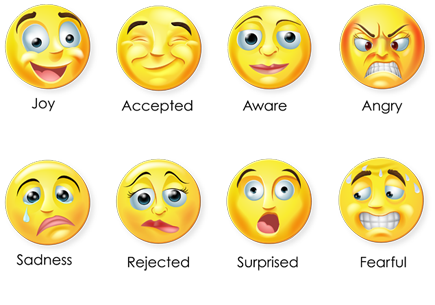> INTRODUCTION
I truly believe that we aren’t supposed to wake up from a dream with information; the purpose is to wake up with a feeling. It’s important to explore the emotions before you explore the symbols.
> Emotions
It's often difficult to find the time to truly sit with and appreciate our emotions in the rush of everyday life. Yet, at night, we get the opportunity to slow down, sleep and dream. It's in our dreams, and the change in rhythm of our minds, that we often tap into emotions that may have been trying to get our attention during the day. Identifying the emotions that pop up in our dreams provides a wonderful opportunity to connect with how we feel, and to better understand where we're at and what is happening in our lives. Our dreams may reflect difficult times, but they can equally reflect joyous ones.
What is an emotion? Most of us have an intuitive sense of what an emotion is, and we are quick to define people as "emotional". It seems to describe a person's state when they are caught up in an emotion, whether it be fear, pain, anger, joy or sadness. Indeed, The Macquarie Concise Dictionary defines emotion as "an affective state of consciousness in which joy, sorrow, fear, hate, or the like, is experienced".

Here are the eight faces that represent the eight primary emotions that form
the basis of identifying the feelings that we have whilst dreaming
Feelings, on the other hand, though the words can be interchangeable, most commonly describes the sensate experience of the emotion. Indeed,The Macquarie Concise Dictionary defines emotion as "an affective state of consciousness in which joy, sorrow, fear, hate, or the like, is experienced". Feelings, on the other hand, though the words can be interchangeable, most commonly describes the sensate experience of the emotion. I feel sad, angry, joyful, fearful, and so on. So, an emotion is a state of feeling, and a feeling is the sensate experience of the emotion. Whew!Though very simplistic, I was fascinated with theorist R.Plutchik's (1980) approach to the classification of emotions. He suggested that there are eight primary emotions - joy, acceptance,surprise, fear, sorrow, disgust, expectancy and anger - and that other emotions are a mixture of these. It's not surprising, then, that we often feel confused when we are emotional, which is why it's often important to ask, what exactly am I feeling? To assist you int he identification of the emotion and feeling, I have placed eight primary emotions for you to consider. Facial expressions have been used to identify emotions as far back as 1884 when William James identified them as behavioural changes.
When a feeling is identified, we become aware of what it is that brings us joy, peace, wonder and so on in our lives, and, if we identify a particularly difficult emotion, it can help us to find out what needs to be done (if anything), to work through it. Often, the best way to "work through" an emotion, is to simply allow it to be,and it's also often helpful to define the emotion. For example, if you are feeling jealous, it's helpful to know that jealousy is intolerance to a perceived rivalry or advantage. You can then explore the feeling in context to the dream by asking questions so that you’re in touch with the emotion and the "why" of the emotion. It's helpful to remember that every so-called "negative"emotion has the potential to be "positive". It's only energy. Like magnet, with a positive and negative end, we are a mix of"positive" and "negative" emotions. We don't judge each end of the magnet as good or bad; similarly it's counter productive to judge an emotion as good or bad. To help you to work better with your emotions, most particularly the emotions that accompany your dreams, I encourage you to spend a few minutes each morning to sit with them before you get up. The idea is to help you to clarify your dream and get in touch with your emotions so that you can center your thoughts and begin your day with insights that bring self-empowerment.